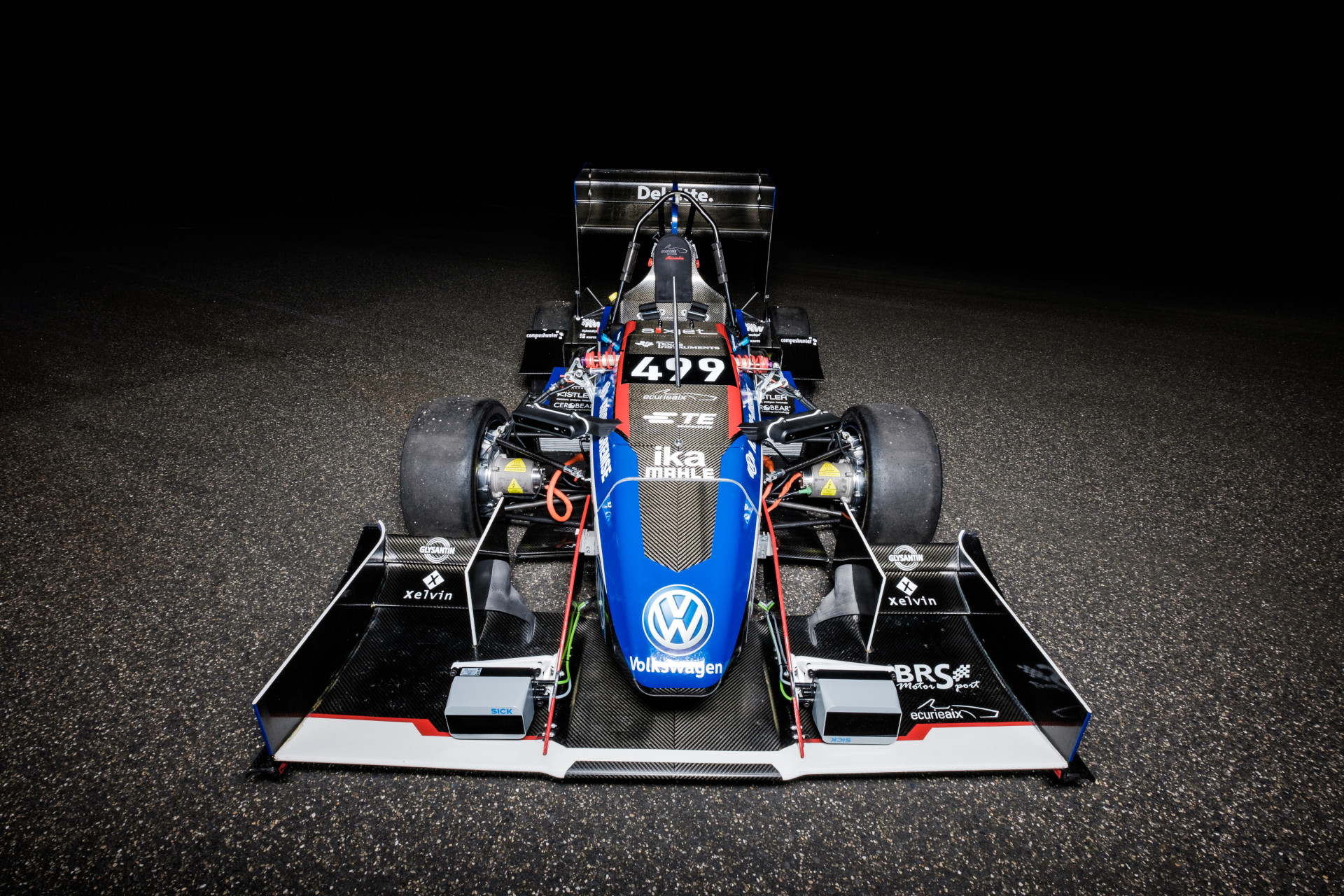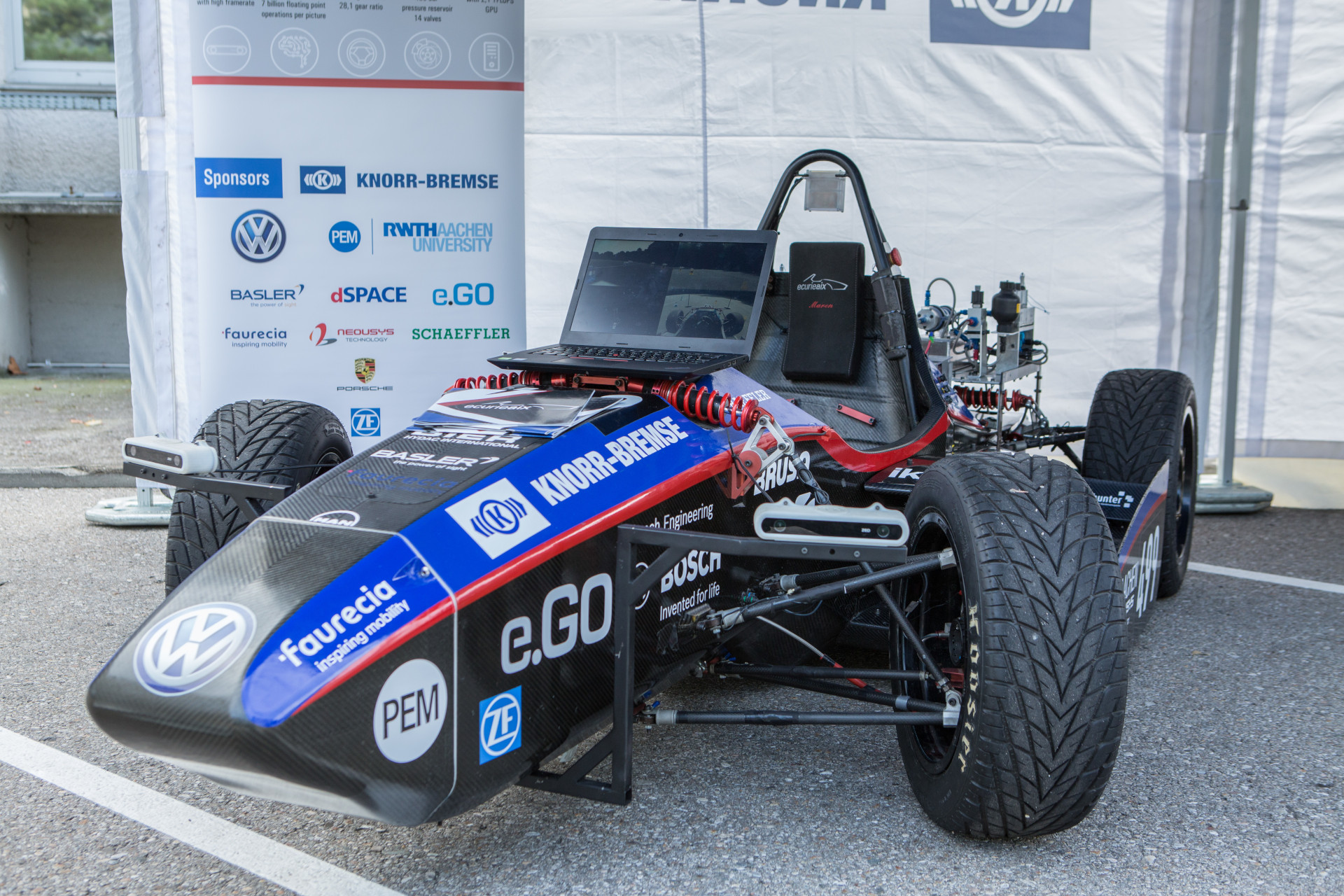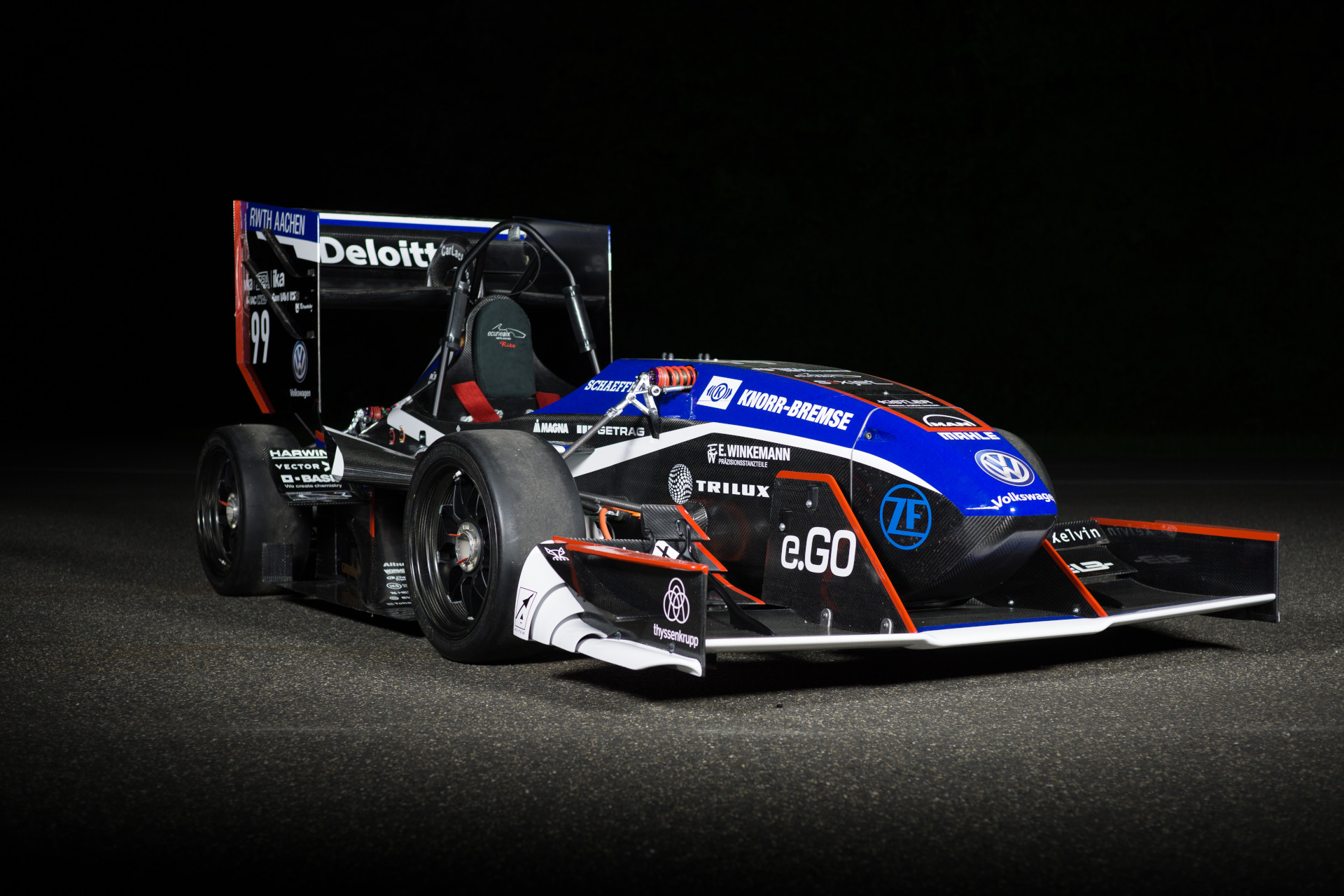Driverless
Following the trend in the automotive industry, an autonomous competition class was launched in 2017.
The vehicles are to drive completely autonomously around the race track.
In order to meet the new challenge, we participated directly in the first year of the competition with our first autonomous vehicle.
2019
eace06.d
Technical innovations
- Sensor technology
For this innovative vehicle, 2 LIDAR sensors have been used for the first time. - Actuators
In the course of optimization, the vehicle changed from hydraulic to pneumatic brake actuation compared to its predecessor. - Software
The localization mapping was significantly revised
Sensors
- Two stereo cameras
- CarPC with high-end graphics card
- Computer Vision: Neural network for cone recognition
- ROS - Robot Operating System
- Inertial Measurement Unit for motion measurement
- Autonomous steering
- Autonomous hydraulic braking system
Actuation
- The pneumatic brake actuation acts with a force of up to 1200N
- A 24Nm servo motor with a planetary gear sets the steering angles</div
Software
- Acceleration and gyroscope data can be used to determine the position of the vehicle in real time
- An optional use of a GPS signal can additionally serve as a correction
- Compared to the predecessor, a much better track measurement and recognition of pylon positions has been implemented
Aerodynamics
- Front and rear wing
- Rear cooling
- Underbody
- Aerodynamic rear cover and diffuser
Electrical system
- Driver Interface: 4″ paperwhite display
- Engine control: self-developed
- Data Logger: Vector GL1010
- LV system: self-developed universal control electronics
- Live Telemetry System
- Self-developed Battery Management System
Frame
- One-piece monocoque in CFRP sandwich construction, Rohacell and aluminum honeycomb core
- Lamination process: Prepreg
- Crash element: aluminum honeycomb
Chassis
- Wheelbase: 1530mm
- Track width: 1250mm (front axle); 1200mm (rear axle)
- Sword stabilizers front and rear axle
- Double triangular wishbones made of carbon fiber
- Pushrod wheel suspension
- 4 external brake discs
- Tires: Continental C17 205 / 470 R13
- Self-developed CFRP aluminum rim
Drive train
- Engine: 4 AMK wheel hub motors with torque vectoring
- max. speed: 20.000 rpm
- max. torque: 4 x 22 Nm
- max. power: 4 x 33 kW
- max. battery voltage: 600 V
- cooling system: water cooling
- combined battery inverter liquid cooling
- gear ratio: 1:15,13
- gearbox: 4 x 1,5 stage planetary gearbox
2017
eace04.d
Technical innovations
- Cameras
For object recognition, the eace04.d uses two stereo cameras - Neural network
A self-trained neural network recognizes the cones by itself - Steering actuator
A steering motor engages directly in the lower steering to maneuver the eace04.d around the track
Aerodynamics
- Front and rear wings
- Rear cooling
- Underbody
- Aerodynamic rear cover and diffuser
Electrical system
- Driver Interface: 4″ paperwhite display
- Engine control: self-developed
- Data Logger: Vector GL1010
- LV system: self-developed universal control electronics
- Live Telemetry System
- Self-developed Battery Management System
Frame
- One-piece monocoque in CFRP sandwich construction, Rohacell and aluminum honeycomb core
- Lamination process: Prepreg
- Crash element: aluminum honeycomb
Chassis
- Wheelbase: 1530mm
- Track width: 1250mm (front axle); 1200mm (rear axle)
- Sword stabilizers front and rear axle
- Double triangular wishbones made of carbon fiber
- Pushrod wheel suspension
- 4 external brake discs
- Tires: Continental C17 205 / 470 R13
- Self-developed CFRP aluminum rim
Drive train
- Engine: 4 AMK wheel hub motors with torque vectoring
- max. speed: 20.000 rpm
- max. torque: 4 x 22 Nm
- max. power: 4 x 33 kW
- max. battery voltage: 600 V
- cooling system: water cooling
- combined battery inverter liquid cooling
- gear ratio: 1:15,13
- gearbox: 4 x 1,5 stage planetary gearbox
Driverless
- Two stereo cameras
- CarPC with high end graphics card
- Computer Vision: Neural network for hat recognition
- ROS - Robot Operating System
- Inertial Measurement Unit for motion measurement
- Autonomous steering
- Autonomous hydraulic braking system
2017



